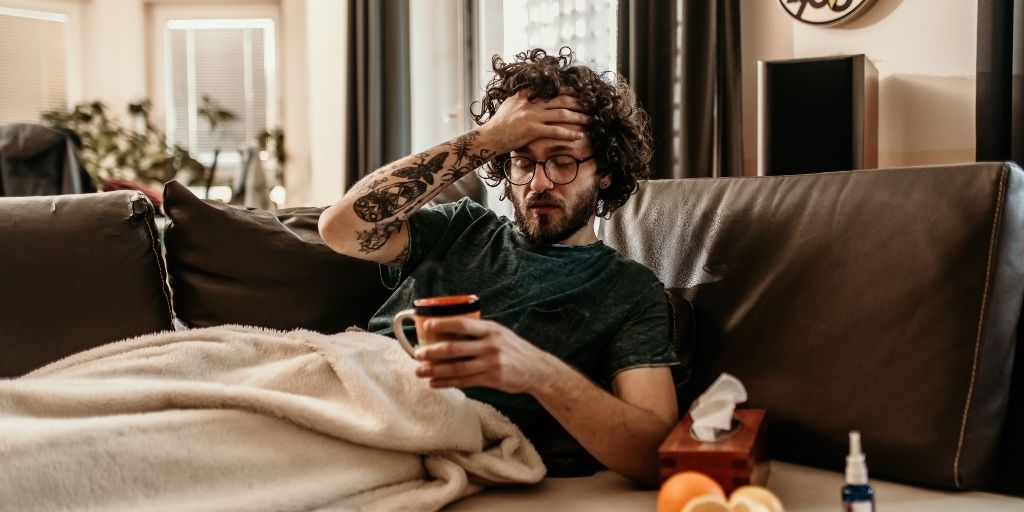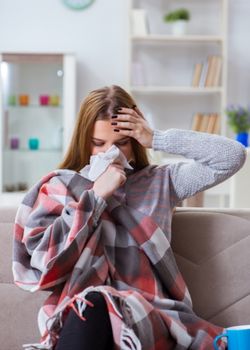Is It Safe to Detox From Opioids at Home?
 Jason and Landon were both addicted to opioids. And both wanted to start recovery with a safe opioid detox.
Jason and Landon were both addicted to opioids. And both wanted to start recovery with a safe opioid detox.
Jason decided to quit cold turkey at home.
Landon went to a detox facility.
Want to guess who had the better experience?
Opioid Detox at Home vs Medical Detox
 Jason’s withdrawal symptoms kicked in a few hours after he took his last OxyContin. Now it felt like he had a really, really bad flu. He had chills, cramps, nausea, and diarrhea. His body felt achy, he was depressed, and he was beyond irritable.
Jason’s withdrawal symptoms kicked in a few hours after he took his last OxyContin. Now it felt like he had a really, really bad flu. He had chills, cramps, nausea, and diarrhea. His body felt achy, he was depressed, and he was beyond irritable.
And Jason experienced all of these symptoms alone. The temptation to use again – just to make the sickness go away – was so strong. If he had any pain pills stashed around the house, he definitely would have used them.
Landon also felt withdrawal symptoms a few hours after taking the last Opana in his pocket. But here’s the difference: Landon is under medical supervision at a detox center. And that means the staff can provide medications and therapies that make his withdrawal symptoms a lot more tolerable.
Clinicians can also give Landon IV fluids and medications to help him stay hydrated and control any vomiting or diarrhea. And a counselor is available to help Landon work through his cravings and feelings of depression.
The Dangers of Detoxing at Home
Compared to Jason’s at-home opioid detox, Landon’s experience was much smoother and, more importantly, much safer.
Jason faces two significant problems:
- Physical danger: Opioid withdrawal can cause severe symptoms. Without supervision or treatment, detoxing at home can put you in serious danger. The withdrawal symptoms – or complications caused by these symptoms – can even be fatal.
- Relapse: Medical professionals can help ease opioid withdrawal symptoms, while clinicians provide essential forms of supportive care to get you through the detox phase and beyond. Without these forms support, you’re much more likely to relapse.
Could Jason make it through opioid detox at home and come out on the other side feeling safe, sober, and healthy? It’s possible. But there are better ways to detox that come with much with less risk and much better outcomes.
Jason could have tried supervised tapering or inpatient medical detox.
Toll-free
800-671-4304
Call Now
Opioid Withdrawal Symptoms
Common symptoms of opioid withdrawal include the following:
- Anxiety
- Chills
- Sweating
- Nausea
- Vomiting
- Diarrhea
- Joint pain
- Tremors
- Insomnia
- Suicidal thoughts
Supervised Tapering: Slow and Steady Wins the Race in Safe Opioid Detox
Rather than trying to quit cold turkey on his own, Jason could have gotten help from his doctor to create a withdrawal plan. Together, they would’ve gradually reduced Jason’s dose of opioids until he was completely opioid-free. This process is called tapering.
Depending on your drug use and frequency, the tapering process can take weeks or months to complete. During that time, a doctor monitors your health, helps you manage withdrawal symptoms, and teaches you new ways to cope with pain or other issues.
A taper generally involves decreasing the opioid by 5-20 percent every few days – or every few weeks – depending on the speed of the taper, the patient’s health, and other factors. Rapid tapers can be completed in 7-14 days, while slow tapers may take 6 months or longer (depending on the starting dose).
This supported tapering method gives the body time to adjust to lower levels of opioids, and eventually, no opioids at all. It’s a step-by-step process that can help lessen your discomfort and allow you to develop new skills designed to reduce the likelihood of relapse.
Tips to Manage Withdrawal
During a supervised opioid taper, medical professionals encourage patients to consider the following tips:
- Drink plenty of water
- Eat nutritious meals
- Take walks or do other moderate exercises and stretching
- Find ways to relax (music, books, humor, deep breathing)
Inpatient Medical Detox: More Safety, Less Suffering
An inpatient detox facility can effectively monitor Jason’s opioid withdrawal symptoms. While going through the detox program, he has access to all the supportive care he needs, and he can receive immediate medical attention if necessary.
Many facilities offer medication-assisted treatment, counseling, three nutritious meals a day, and around-the-clock clinical care. People don’t have access to these things when they detox at home. Plus, staff can connect you with resources for ongoing support and aftercare once you complete opioid detox.
Toll-free
800-671-4304
Call Now
The Bottom Line on Safe Opioid Detox
 You don’t have to go through this alone. And your detox doesn’t have to include painful withdrawal.
You don’t have to go through this alone. And your detox doesn’t have to include painful withdrawal.
Can you detox from opioids at home? Sure, it’s possible to safely detox from opioids at home, but the “safely” part is iffy.
Here are three things to keep in mind if you’re considering an at-home opioid detox:
- Opioid withdrawal symptoms can be life-threatening.
- Without support, cravings can cause you to relapse before finishing the detox process.
- Supervised tapering or inpatient detox offers treatment to lessen opioid withdrawal symptoms, making the process much safer and more successful.
For information about treatment options for you or a loved one, call 800-996-6135 today.
Images Courtesy of Canva.

